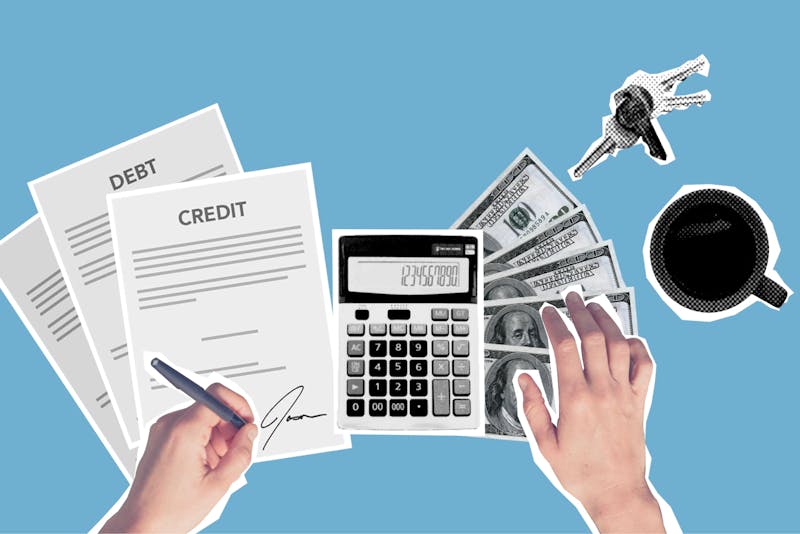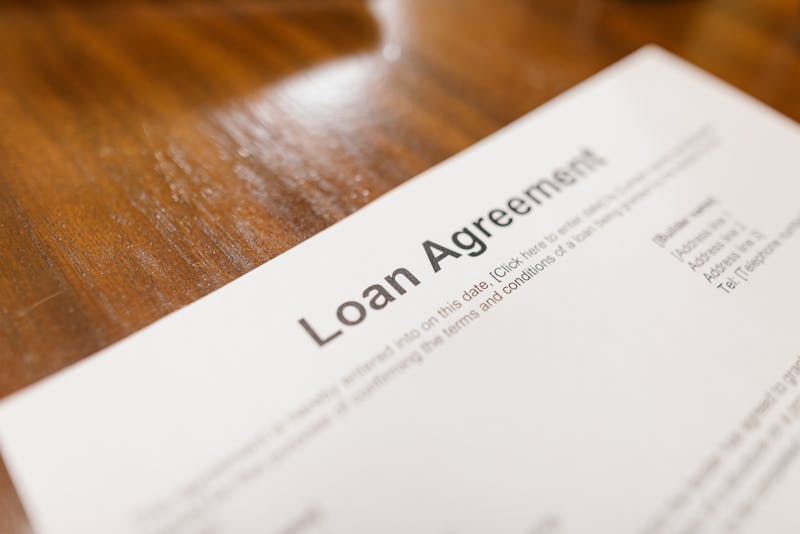
Upgrading your home can be a great way to enhance its value, functionality, and appeal, whether you’re looking to sell, rent, or simply improve your living space. However, it’s crucial to ensure that the money spent on home improvements yields a high return on investment (ROI). Knowing how to finance these upgrades efficiently is essential for homeowners and real estate investors who want to maximize their property’s value without overspending. Some home upgrades provide a better return than others, and understanding the best ways to fund these projects can make a significant difference in your overall financial strategy. In this article, we’ll explore the steps to assess, budget, and finance high-ROI home upgrades, and provide expert tips on maximizing the value of these improvements.
1. How Do You Assess Which Home Upgrades Yield the Highest ROI?

1.1 Conducting ROI Research
Before embarking on any home improvement project, it’s crucial to research which upgrades offer the highest ROI. Some projects may offer substantial returns, while others may not be as financially rewarding. To assess ROI, start by identifying top home improvements that are consistently recognized for their ability to increase home value. Many experts suggest that upgrades like kitchen remodeling, window replacements, and energy-efficient systems can deliver significant returns. Additionally, adding features like a well-designed in-ground pool can attract buyers in certain markets, though it’s essential to factor in maintenance costs when considering ROI.
1.2 Consulting ROI Experts
Consulting experts is another critical step in determining which upgrades will provide the best return. Professionals such as real estate agents, general contractors, and home inspectors have firsthand knowledge of which upgrades tend to raise property values in specific areas. A local real estate agent, for example, can tell you which home features are in high demand in your neighborhood. Similarly, a professional from an in ground pool company could provide insight into the ROI of installing a pool in your region, depending on the local climate and housing market trends.
1.3 Performing a Cost-Benefit Analysis
Once you’ve gathered information about potential upgrades, the next step is to perform a cost-benefit analysis. This involves evaluating the initial investment required for each project versus the potential financial return. Consider the total cost of hiring window replacement companies, or the expense of working with local basement contractors for a basement remodel. Understanding the balance between costs and benefits is essential for making informed decisions that will ensure your home improvements pay off in the long run.
2. How Do You Set a Realistic Budget for Home Upgrades?
2.1 Financial Assessment
Before you begin any home improvement projects, it’s essential to assess your financial situation. Take a close look at your available funds to determine how much you can invest in upgrades. For larger projects, such as a home addition or major kitchen remodeling, you may need to tap into savings or explore financing options. Establishing a realistic budget from the outset ensures you can complete your projects without overspending or falling short halfway through the process.
2.2 Project Scoping
To stay within your budget, it’s important to clearly define the scope of your home improvement projects. For instance, if you’re planning to upgrade your kitchen, work with cabinet contractors and a kitchen designer to outline exactly what you want. Be specific about materials, finishes, and the extent of the remodel. Similarly, when considering flooring services or electrical installations, understand the scope of each task to avoid unexpected costs. Setting clear parameters for each project allows you to allocate funds more effectively and reduces the likelihood of overspending.
2.3 Allocating Funds Efficiently
Once you have a clear understanding of your financial capabilities and project scope, the next step is to allocate funds efficiently. Prioritize upgrades that will offer the best return, such as kitchen remodeling or bathroom renovations, while ensuring that funds are available for the essential parts of a home addition or major electrical installations. It’s important to balance high-priority improvements with aesthetic upgrades to maximize your budget and ROI.
3. Which Are the Key Home Improvements with the Best Potential ROI?

3.1 Kitchen Remodeling
Kitchen remodeling is one of the highest-ROI home improvements that you can make. The kitchen is often considered the heart of the home, and potential buyers or tenants are willing to pay more for an updated, modern, and functional space. By upgrading appliances, improving lighting, or working with cabinet contractors to install custom cabinetry, you can significantly enhance the overall appeal of your home. A well-executed kitchen remodel can pay dividends, as many homebuyers are particularly drawn to homes with updated kitchens.
3.2 Bathroom Renovations
Bathroom renovations also tend to offer a high return on investment. A simple renovation, such as updating fixtures, installing a new vanity, or replacing outdated tiles, can transform a bathroom from drab to appealing. In more extensive renovations, you may consider adding modern features such as a spa bath, energy-efficient lighting, or a new shower. Bathroom updates not only increase the market value of a home but also improve its overall livability.
3.3 Energy Efficiency Upgrades
Investing in energy-efficient upgrades is an increasingly popular way to boost home value while saving on long-term utility costs. Many buyers are now looking for homes with energy-efficient windows, insulation, or solar panels. Upgrades such as window replacements and installing energy-efficient HVAC systems, electrical installations, and appliances can provide both immediate savings and long-term ROI. With growing concern about environmental impact and rising utility costs, these improvements are highly attractive to today’s buyers.
4. What Are the Best Finance Options for Home Upgrades?
4.1 Home Equity Loans
A home equity loan is one of the best ways to finance large home improvement projects, such as a home addition or kitchen remodeling. By borrowing against the equity you’ve built in your home, you can access a lump sum of money at a relatively low interest rate. This option is ideal for projects that require substantial investment and can increase your home’s value. However, keep in mind that your home is collateral, and failure to repay the loan could result in losing your property.
4.2 Personal Loans
For smaller projects, such as flooring services, painting contractor services, or minor bathroom renovations, a personal loan may be a good option. Personal loans are unsecured, meaning they don’t require collateral, and typically offer flexible terms. With relatively lower interest rates compared to credit cards, personal loans allow you to manage smaller upgrades without tapping into your home’s equity. Be sure to shop around for the best rates to maximize your financing.
4.3 Government Incentives
In some cases, government programs offer rebates, tax credits, or grants for specific types of home improvements, especially those focused on energy efficiency or sustainability. These incentives can help offset the costs of upgrades like window replacements or electrical installations. Research the available incentives in your area to take advantage of any financial assistance that could make your home improvements more affordable.
5. Tips to Maximize ROI from Home Improvements

5.1 Timing the Market
Timing your home improvements to align with market trends can significantly boost ROI. For example, if you’re planning a home addition or kitchen remodeling, aim to complete the project before listing your home for sale. This allows you to capture peak market interest when demand is high, resulting in a better return on your investment. Conversely, avoid scheduling major projects during off-seasons or when the housing market is stagnant.
5.2 Quality Over Quantity
When making home improvements, always prioritize quality over quantity. While it may be tempting to tackle multiple projects simultaneously, focusing on a few high-quality upgrades will yield better results. Whether you’re working with a painting contractor, flooring services, or installing energy-efficient windows, choose materials and craftsmanship that reflect high standards. Quality renovations tend to attract more attention from buyers and can lead to higher offers.
5.3 Staging and Presentation
In addition to upgrading your home, presenting it well can increase its value. Professional staging, including decluttering and arranging furniture to highlight key features, can make your home more attractive to potential buyers. Consider hiring a professional to stage your home after completing renovations, especially if you’re selling. Presentation matters, and a well-staged home can significantly influence buyer perceptions and lead to a higher sales price.
6. DIY Versus Hiring Professionals: Which Is Better for ROI?
6.1 Pros and Cons of DIY
DIY home improvements can save money, but they don’t always yield the highest ROI. If you have the skills and knowledge, handling smaller tasks such as painting or simple landscaping may be worthwhile. However, for complex projects such as electrical installations, kitchen remodeling, or a home addition, the risk of mistakes could outweigh the potential savings. Carefully consider your abilities and the potential return before deciding to take on any project yourself.
6.2 Choosing Professional Services
For significant projects like window replacement, electrical installations, or basement finishing, hiring professionals is often the best option. Working with local basement contractors or general contractors ensures that the work is done correctly and efficiently. Professional services also come with guarantees, which can add value and peace of mind for both you and potential buyers. These projects are complex and require a high level of expertise, which is why investing in professionals often results in a higher ROI.
6.3 Balancing Both Approaches
Many homeowners choose a combination of DIY and professional services to balance costs and maximize ROI. For example, you might tackle smaller tasks such as landscaping or installing new cabinet hardware while hiring professionals for larger projects like kitchen remodeling or flooring services. This approach allows you to save money on smaller jobs while ensuring that the more complex renovations are completed to the highest standard.
7. How to Manage Timelines Effectively for Home Upgrades

7.1 Setting Realistic Deadlines
To ensure your home upgrades are completed on time, it’s essential to set realistic deadlines. For larger projects, such as kitchen remodeling or home additions, creating a detailed timeline with milestones will help keep everything on track. Be sure to factor in unexpected delays, such as supply chain issues or contractor availability, to avoid running over budget or missing important deadlines.
7.2 Using Project Management Tools
Project management tools can help streamline the process of managing home upgrades. These tools allow you to track tasks, deadlines, and budgets in one place. Whether you’re working with a general contractor or handling DIY tasks, using a project management app or software can help you stay organized and ensure everything stays on track.
7.3 Communication and Coordination
Effective communication with contractors and vendors is crucial to ensure your projects run smoothly. Regular check-ins with local basement contractors, flooring services, or a painting contractor can help address any issues before they become problems. By maintaining clear lines of communication, you can coordinate efforts and ensure that each step of the process is completed efficiently.
8. How Do Home Upgrades Impact Overall Property Value?
8.1 Understanding Market Valuation
Home upgrades have a direct impact on property value, but it’s essential to understand how appraisers and real estate agents value these improvements. Market conditions and buyer preferences play a significant role in determining the value of your home after upgrades. For example, a high-quality kitchen remodel or a new home addition may boost your home’s appraisal, while the ROI for certain features, such as an in-ground pool, may vary based on the local market.
8.2 Influencing Buyer Perceptions
One of the key ways home upgrades increase value is by improving buyer perceptions. Features such as energy-efficient windows or modern kitchen cabinetry appeal to buyers who are willing to pay more for updated, functional spaces. By focusing on the upgrades that resonate with buyers, you can increase both the sale price and the demand for your home.
8.3 Medium and Long-term Value Increase
Some upgrades provide immediate returns, while others may increase value more gradually over time. Energy-efficient upgrades, for example, may not deliver a significant immediate return but can lead to substantial long-term savings for homeowners, making them a wise investment in the long run. Similarly, a home addition can provide extra living space that gradually enhances the home’s overall value as the market evolves.
9. What Are Common Pitfalls to Avoid When Financing Home Upgrades?
9.1 Overestimating Return Value
One of the biggest mistakes homeowners make when financing upgrades is overestimating the return on investment. Be sure to research and consult with experts to set realistic expectations for each project. Overestimating the potential ROI can lead to financial disappointment and unnecessary debt.
9.2 Under Budgeting
Another common pitfall is under budgeting for a project. While you may have a set budget in mind, it’s important to include a contingency for unexpected costs, such as price fluctuations or additional work that arises during the project. Proper budgeting will ensure you can complete the project without running out of funds.
9.3 Ignoring Future Maintenance Costs
Home upgrades require ongoing maintenance, and it’s important to factor these costs into your financial plan. Whether you’ve worked with a painting contractor or installed new electrical systems, maintenance expenses will add up over time. Ensure that your financial plan accounts for these ongoing costs to keep your home in good condition.
10. How to Develop a Long-Term, ROI-Focused Home Improvement Strategy?
10.1 Continuous Market and ROI Research
To maintain a high ROI on your property, it’s crucial to stay informed about trends in home upgrades. Continuous market and ROI research can help you identify new opportunities to increase your home’s value. By keeping up with industry news and regularly consulting experts, you can make informed decisions that will benefit your home in the long term.
10.2 Periodic Home Evaluation
Regularly evaluate your home’s condition and assess whether upgrades are needed. A periodic evaluation can help you stay ahead of trends and identify opportunities for improvements that will boost your home’s value. Working with a general contractor or other home improvement professionals can provide valuable insight into potential upgrade opportunities.
10.3 Investing in Sustainability
Sustainability is becoming increasingly important to homebuyers. Investing in eco-friendly upgrades, such as energy-efficient appliances, solar panels, or water-saving fixtures, can provide both financial and environmental benefits. By prioritizing sustainability in your home improvement strategy, you’ll not only increase value but also appeal to a growing number of environmentally conscious buyers.
Conclusion
Successfully financing high-ROI home upgrades requires strategic planning, budgeting, and a focus on the long-term value of your property. By understanding which upgrades offer the best return, setting a realistic budget, and choosing the right financing options, you can make informed decisions that will boost the value of your home. Whether you work with professionals like window replacement companies or general contractors, or choose to handle smaller tasks yourself, focusing on quality and market demand is key to maximizing ROI. Ultimately, investing in the right home improvements and managing finances effectively can help ensure that your upgrades provide substantial returns.


